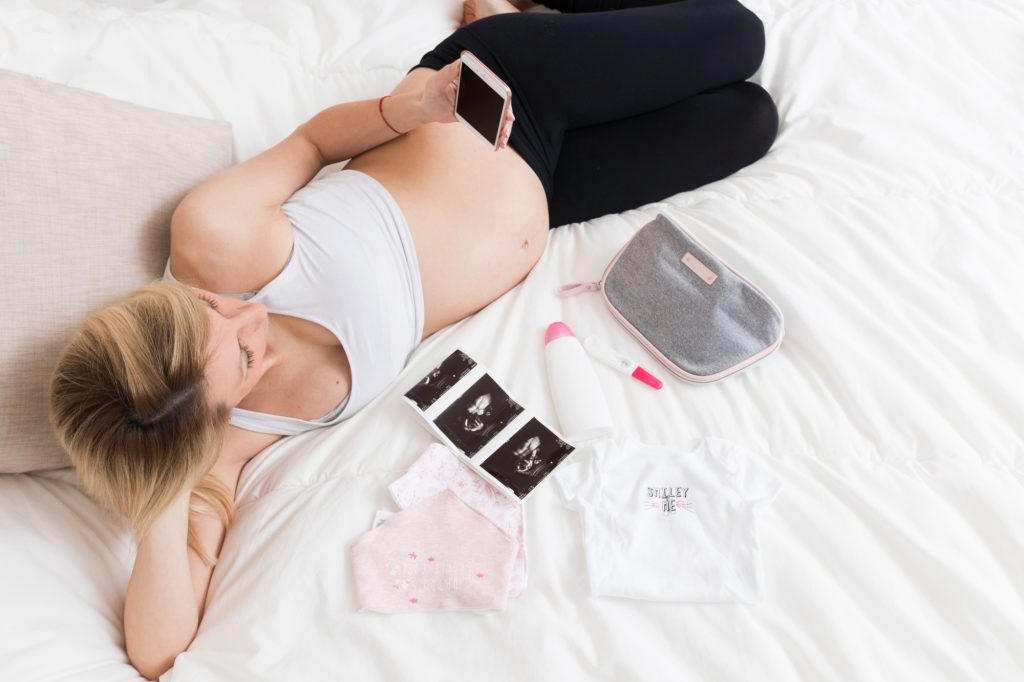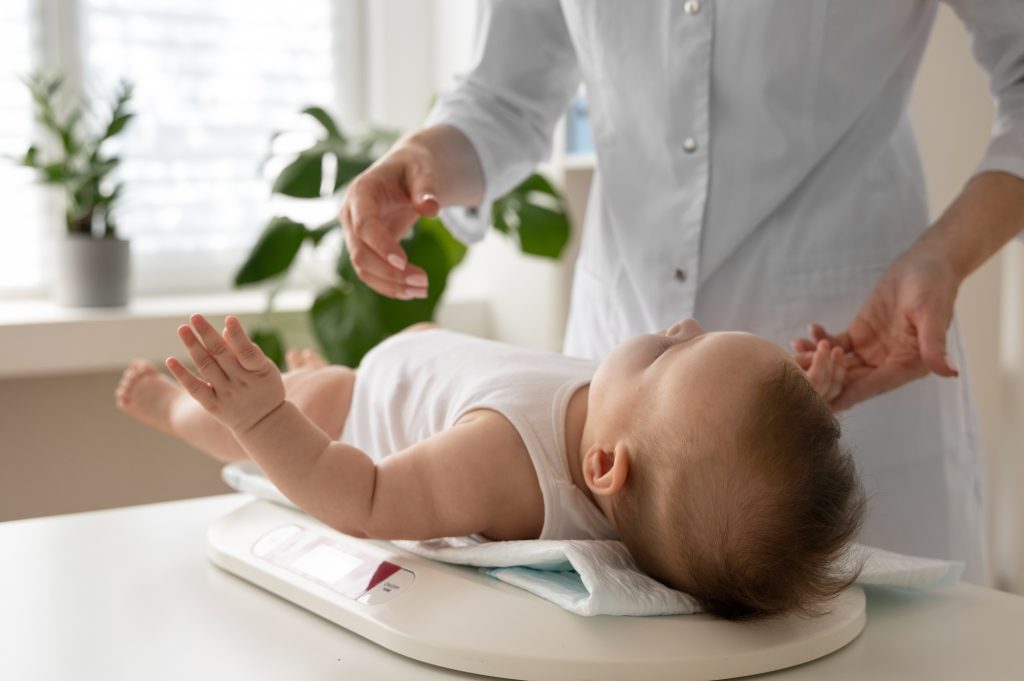Discover the impact of changing baby’s position during pregnancy on the progression of back pain.
How Does Changing Baby’s Position During Pregnancy Affect Back Pain Progression?
As expecting mothers know all too well, pregnancy brings with it a whole host of aches and pains. One of the most common complaints during this special time is back pain. But did you know that the position of your baby can actually impact the progression of this discomfort? It’s true! In this article, we’ll dive headfirst into the fascinating world of pregnancy back pain and explore how changing your baby’s position can make a world of difference.

Understanding the Basics of Pregnancy and Back Pain
First things first, let’s get acquainted with the ins and outs of pregnancy and back pain. It’s no secret that a woman’s body goes through numerous changes during pregnancy, and these changes can have a significant impact on her overall comfort. From hormonal shifts to weight gain, there are many factors at play.
But when it comes to back pain, the anatomy of a pregnant woman’s back is crucial. The spine becomes curved due to the expanding uterus, and the pelvis tilts forward to accommodate the growing baby. These changes can lead to added stress on the spine and surrounding muscles, resulting in discomfort.
The Anatomy of a Pregnant Woman’s Back
Let’s take a closer look at the fascinating anatomy of a pregnant woman’s back. The spine consists of several vertebrae, which are small bones stacked upon one another. In between each vertebra are intervertebral discs that act as cushions, allowing for flexibility and shock absorption.
During pregnancy, the weight of your growing baby places additional pressure on these discs and the surrounding ligaments. As a result, the nerves in your back may become compressed, leading to pain and discomfort.
But that’s not all! The muscles in your back also play a crucial role in supporting your growing belly. As your uterus expands, the muscles have to work harder to maintain proper posture and balance. This increased workload can lead to muscle fatigue and strain, contributing to back pain.
Furthermore, the ligaments in your back become more elastic during pregnancy due to hormonal changes. While this increased flexibility is necessary for the birthing process, it can also make your back more susceptible to injury and strain.
Common Causes of Back Pain During Pregnancy
So, what exactly causes back pain during pregnancy? Well, there are several culprits at play. For starters, the increased weight and pressure on the spine can strain the muscles and ligaments, causing them to become inflamed and painful.
Additionally, hormonal changes can affect the ligaments and joints in your back, making them more relaxed and prone to injury. This combination of factors creates the perfect storm for pregnancy-related back pain.
But let’s not forget about the impact of your changing center of gravity. As your belly grows, your center of gravity shifts forward, putting additional strain on your back. This can lead to muscle imbalances and increased stress on the spine, resulting in discomfort.
Furthermore, the changes in your posture during pregnancy can also contribute to back pain. As your belly expands, you may find yourself leaning backward to counterbalance the weight. This unnatural posture can strain the muscles in your back and lead to pain and discomfort.
Lastly, the stress and emotional toll of pregnancy can also manifest as physical pain. The hormonal changes and increased responsibilities can contribute to muscle tension and tightness, exacerbating any existing back pain.
The Role of Baby’s Position in Pregnancy
Now that we’ve laid the groundwork, let’s turn our attention to the role of your baby’s position during pregnancy. As your little one grows and develops, they will naturally change positions in your womb. These positions can influence not only your comfort but also the progression of back pain.
Different Positions of the Baby During Pregnancy
Your baby is a little acrobat even before they enter the world! During pregnancy, your little bundle of joy can assume various positions inside your uterus. The most common positions include head-down (vertex), breech (bottom-down), and transverse (sideways).
When your baby is in the head-down (vertex) position, their head is pointing towards your pelvis, and their back is against your belly. This position is considered the most favorable for a vaginal delivery. The baby’s head acts as a natural weight that helps to dilate and efface the cervix during labor.
In the breech (bottom-down) position, your baby’s bottom or feet are positioned to come out first during birth. This position occurs in about 3-4% of full-term pregnancies. While some breech babies can be safely delivered vaginally, most doctors recommend a cesarean section to avoid potential complications.
A transverse (sideways) position means that your baby is lying horizontally across your uterus. This position can make it difficult for the baby to engage in the pelvis and progress through the birth canal. In most cases, a transverse baby will require a cesarean section for a safe delivery.
Each position has its own set of implications for your comfort and back pain levels. Understanding these positions can help you navigate your pregnancy journey with less discomfort.
How Baby’s Position Can Influence Mother’s Comfort
Believe it or not, your baby’s position can greatly impact your comfort levels during pregnancy. When your baby is in the head-down (vertex) position, their weight is evenly distributed, which can relieve some of the strain on your back. The baby’s head acts as a counterweight, helping to align your spine and pelvis, reducing the chances of back pain.
On the other hand, if your little one decides to go breech (bottom-down), the added pressure on your spine and nerves can exacerbate back pain. The weight of the baby’s bottom can put strain on your lower back, causing discomfort and potentially increasing the risk of developing backaches and sciatica.
If your baby is in a transverse position (sideways), they can put pressure on your lower back, causing additional discomfort. The sideways position can also make it challenging for the baby to engage in the pelvis, potentially leading to a longer and more difficult labor.
However, it’s important to remember that every pregnancy is unique, and not all women will experience the same effects based on their baby’s position. Factors such as the size and position of the baby, the shape of the mother’s pelvis, and the strength of the uterine muscles can all influence the impact of the baby’s position on the mother’s comfort.
The Correlation Between Baby’s Position and Back Pain
Now that we’ve established how your baby’s position can impact your comfort, let’s explore the correlation between their position and the progression of back pain. It’s essential to understand that your baby’s position alone is not solely responsible for back pain during pregnancy.
How Baby’s Position Can Exacerbate Back Pain
Imagine this: your baby is in the breech position, putting extra pressure on your spine. Now imagine you’ve been on your feet all day, running errands and tackling your to-do list. The combination of the baby’s position and the strain on your back muscles can intensify your pain and discomfort.
Similarly, if your baby is in a position that places additional stress on your lower back, such as transverse or posterior, you may experience heightened back pain. It’s essential to work with your healthcare provider to determine the best course of action for managing and alleviating this discomfort.
The Science Behind Position-Related Back Pain
While we don’t have all the answers just yet, researchers believe that the relationship between your baby’s position and your back pain is multifaceted. The pressure exerted by your baby can contribute to nerve compression, inflammation, and muscle tension, all of which can lead to back pain.
Additionally, the position of your baby can affect the overall alignment of your spine. If your little one is in a position that throws your posture off balance, it can strain your back muscles, leading to further discomfort.
Techniques to Change Baby’s Position
Now that we know how important your baby’s position is, you may be wondering if there are any safe methods to encourage a change. While you can’t control your baby’s every move, there are a few techniques that may help guide them into a more favorable position.

Safe Methods to Encourage Baby’s Movement
If you’re eager to help your baby assume a certain position, there are a few safe methods you can try. One commonly recommended technique is called the forward-leaning inversion. This involves positioning your upper body lower than your pelvis while leaning forward.
You can also try gentle exercises that promote good alignment, such as pelvic tilts and cat-cow stretches. These movements can help relieve some of the pressure on your back and encourage your baby to move into a more comfortable position.
Precautions When Trying to Change Baby’s Position
While it’s tempting to try everything in your power to change your baby’s position, it’s essential to exercise caution. Always consult with your healthcare provider before attempting any techniques to ensure they are safe for you and your baby.
Remember, your baby will ultimately assume the position that feels most comfortable for them. So, while it’s worth exploring methods to encourage a more desirable position, it’s also important to trust that your little one knows what’s best for them.
Managing Back Pain During Pregnancy
Changing your baby’s position is one piece of the puzzle when it comes to managing back pain during pregnancy. To help you find relief, we’ve compiled a list of non-pharmacological methods that may offer some respite.
Non-Pharmacological Methods for Back Pain Relief
There are several non-pharmacological approaches you can try to alleviate your back pain. From applying heat or cold packs to practicing prenatal yoga or undergoing chiropractic adjustments, there are various strategies that may provide some relief.
It’s crucial to find a combination of methods that work best for you, as every woman’s experience with back pain can differ. Don’t be afraid to experiment with different approaches until you find what brings you the most comfort.
When to Seek Medical Help for Pregnancy Back Pain
While most cases of pregnancy-related back pain can be managed with self-care and non-pharmacological methods, there are instances where medical intervention may be necessary. If your pain is severe, persistent, or accompanied by other worrisome symptoms, it’s important to reach out to your healthcare provider.
By seeking medical help, you can ensure a thorough evaluation of your condition and appropriate treatment if needed. Remember, your well-being and the health of your baby are of the utmost importance.
A Comfortable Journey to Motherhood
As you navigate the beautiful and sometimes challenging path of pregnancy, understanding the impact of your baby’s position on your back pain can make a world of difference. By equipping yourself with knowledge and exploring safe methods to encourage optimal positioning, you’re taking proactive steps towards a more comfortable journey to motherhood.
Remember, every pregnancy is unique, and what works for one woman may not work for another. So, embrace the adventure and trust your instincts. And always remember to consult with your healthcare provider for personalized guidance and support.



